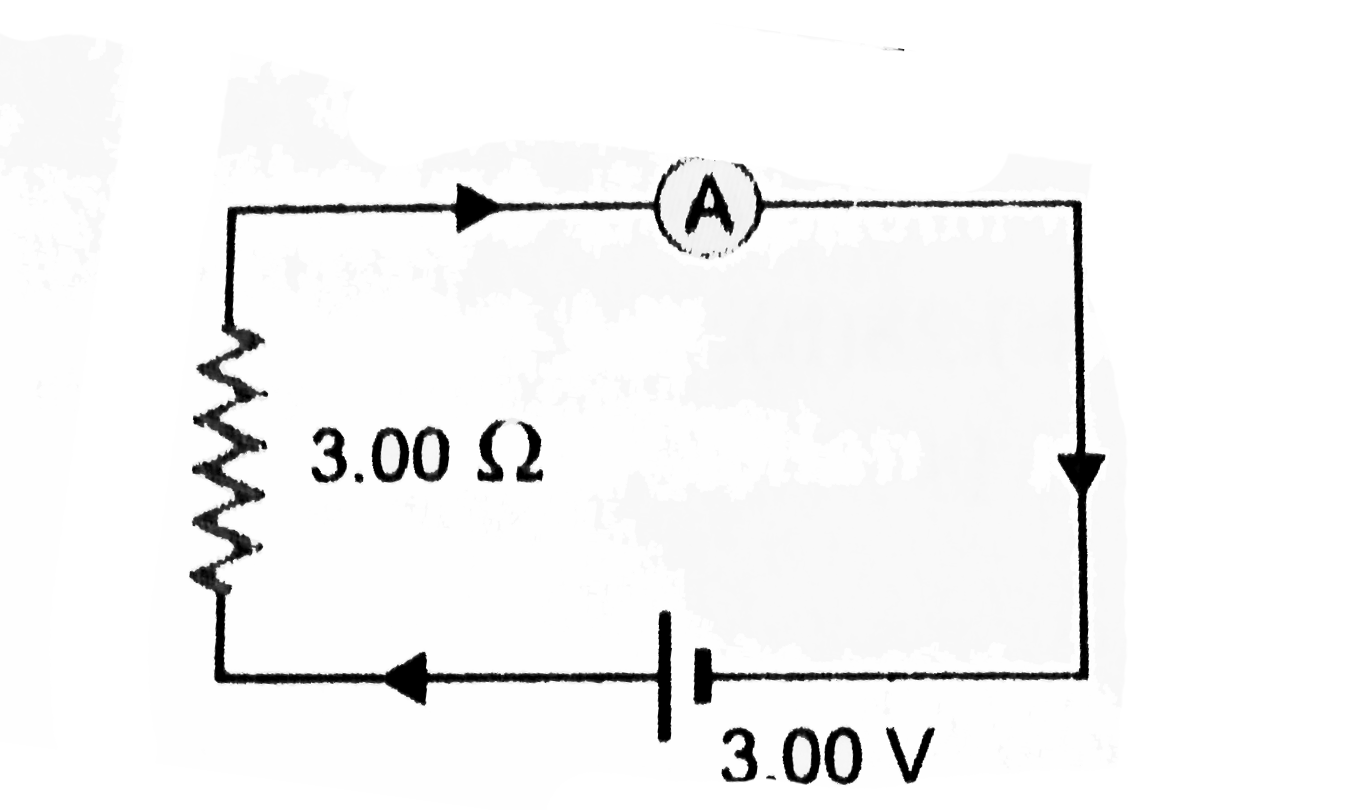A galvanometer of resistance X is converted into an Ammeter by a shunt resistance Y.
X = Y
X<<Y
X⇒Y
X>>Y
The correct Answer is:D
Similar Questions
In the circuit shown in figure, the current is to measured. What is the value of the current if the ammeter shown (i) is a galvanometer with a resistance RG=60⋅00Ω. (ii) is a galvanometer described in (i) but converted to an ammeter by a shunt resistance rs=0⋅02Ω, (iii) is an ideal ammeter with zero resistance?
 View Solution
View SolutionIn the circuit shown in figure, the current is to measured. What is the value of the current if the ammeter shown (i) is a galvanometer with a resistance RG=60⋅00Ω. (ii) is a galvanometer described in (i) but converted to an ammeter by a shunt resistance rs=0⋅02Ω, (iii) is an ideal ammeter with zero resistance?
 View Solution
View Solution
Knowledge Check
- Question 1 - Select One
A galvanometer of resistance 70Ω, is converted to an ammeter by a shunt resistance r3=0.03Ω. The value of its resistance will become
A0.025ΩB0.022ΩC0.035ΩD0.030Ω - Question 2 - Select One
A galvanometer of resistance 70Ω, is converted to an ammeter by a shunt resistance r3=0.03Ω. The value of its resistance will become
A0.025ΩB0.022ΩC0.035ΩD0.030Ω - Question 3 - Select One
A galvanometer of resistance 50Ω is converted into an ammeter by connecting a low resistance (shunt) of value 1Ω in parallel to the galvanometer, S. If full - scale deflection current of the galvanometer is 10 mA, then the maximum current that can be measured by the ammeter is -
A500 mAB510 mAC610 mAD490 mA
A galvanometer of resistance 50Ω is converted into an ammeter by connecting a low resistance (shunt) of value 1Ω in parallel to the galvanometer, S. If full - scale deflection current of the galvanometer is 10 mA, then the maximum current that can be measured by the ammeter is -
View SolutionIn the given circuit the current is to be measured .What is the value of the current if the ammeter shown (a) is a galvanometer with a resistance RG=60.00Ω, (b) is a galvanometer described in (a) but converter to an ammeter by a shunt resistance Rs=0.02Ω, (c) is an ideal ammeter with zero resistance ?
View SolutionA galvanometer of resistance RG is to be converted into an ammeter, with the help of a shunt of resistance R. If the ratio of the heat dissipated through galvanometer and shunt is 3:4, then
View SolutionWhen a galvanometer of resistance G iws converted into an ammeter of range IA then the current passing through shunt (S) is
View SolutionA galvanometer of resistance RG is to be converted into an ammeter, with the help of a shunt of resistance R. If the ratio of the heat dissipated through galvanometer and shunt is 3:4, then
View Solution

